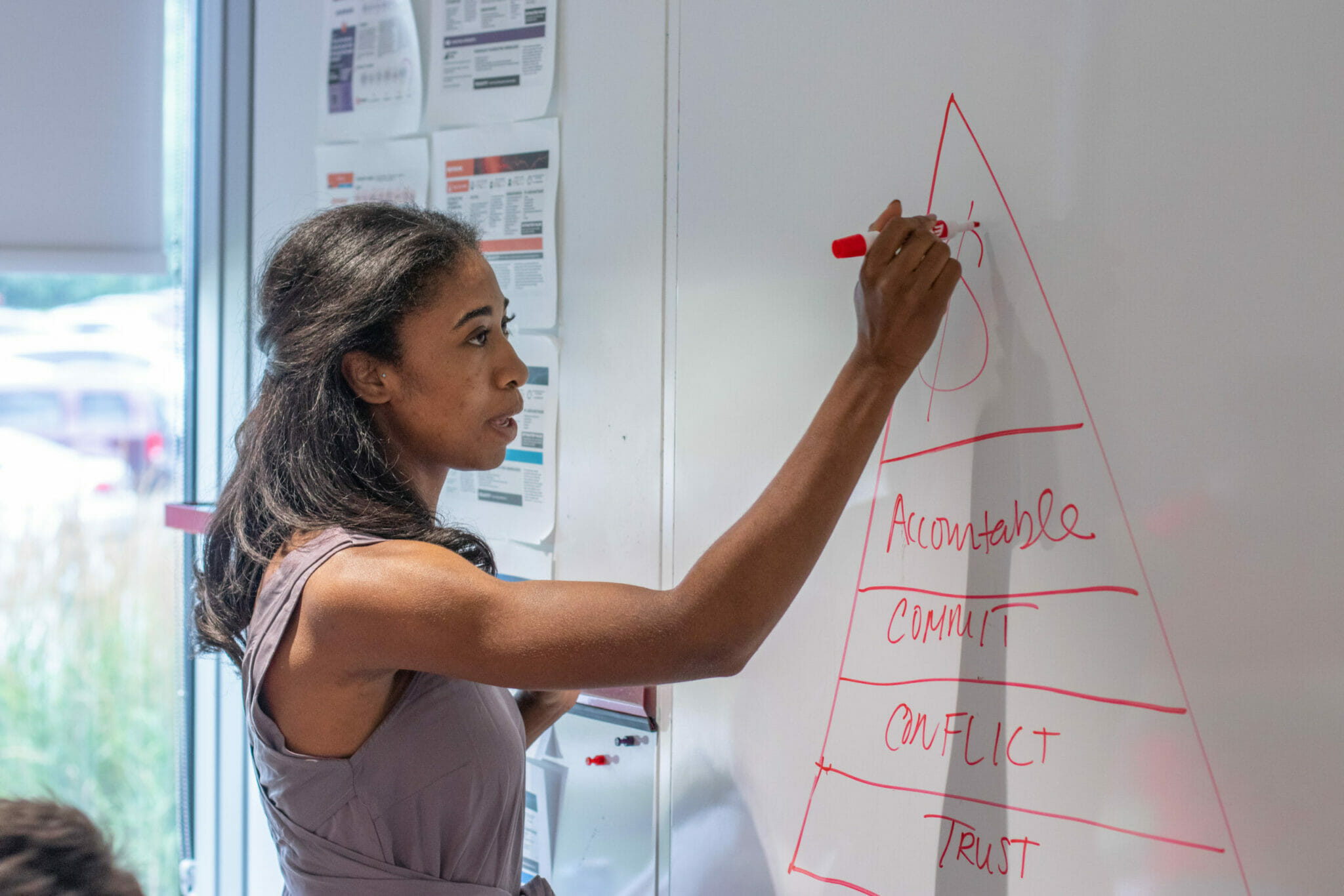Is your team good at making decisions?
That’s a broad question, but if your answer is “yes,” ask yourself a few more:
How do you measure “good”? How did you get good at it? Did you do some mixing and matching of personnel in order to get there?
Efficient decision making doesn’t happen overnight. You become better at reaching group decisions, in part, by understanding your Team Type and team dynamics. You know your people, you recognize the weight and urgency of certain decisions versus others, and with that knowledge, you take a talent optimized approach to decision making.
Teams who make decisions that regularly pan out well share a few common traits. Specifically, these teams tend to have:
- A foundation of trust and awareness
- Clarity around roles and decision-making authority
- An understanding of behavioral data
How do they get these traits? Let’s dive in.
A foundation of trust and awareness
Any high-functioning team is founded on trust. Without it, you can’t assume your team members are operating with good intentions, and you can’t engage in healthy conflict. A team that assumes good intent will be better positioned to make decisions, simply because even amid disagreement, members are granted trust and autonomy.
But you know what makes a team even better? An understanding of what sort of team they are, and how that identity can impact their collective decision making.
An Exploring Team, for example, is relatively risk-tolerant, and naturally favors a swift decision-making process. This team will have its share of people with high dominance drives, as well lower formality drives. This behavioral makeup can be a boon to innovation—but that’s not always what the strategy calls for.
“In a startup, businesses are trying to establish themselves, ” said Lisa Black, Services Product Manager at The Predictive Index. “Experimentation to find their foothold is OK, expected, and part of the process. In a more regulated field, the outcome of those risks can have more of an impact. It’s critical to understand the risk boundaries in which they’re operating, so they have the freedom to learn from mistakes versus making dangerous mistakes that could irreparably harm their business.”
Self-awareness is about understanding your Team Type, but also aligning it with your strategy. That means recognizing the boundaries of that strategy, and adjusting your decision-making style accordingly.

Clarity around roles and decision-making authority
A trusting team fosters autonomy for its members. Everyone has the authority to make certain decisions, regardless of hierarchy, because of that trust. But you still need to determine the “what” and the “when” around that authority.
This is where a responsibility assignment matrix—often known as a RACI chart—can be hugely helpful. It’s pretty simple. Take a given initiative or project, and map out four quadrants or columns, labeling them:
- Responsible
- Accountable
- Consulted
- Informed
Then fill in the names of the people on your team accordingly. Consulted and Informed are self-explanatory. The people who are responsible will actually carry out certain tasks (sending emails, updating project boards, etc.). The accountable parties have the authority to make decisions—or veto other decisions—for this particular project. The buck stops with them, not necessarily because they’re the highest-ranking team members, but because they own the initiative.
Using a RACI chart (or something similar) for decision making not only helps clarify roles and enable a more efficient process—it also helps foster leadership at all levels. You empower team members when you have them manage a project and equip them with decision-making authority, especially those who might be less inclined to exert their influence without such clarity.
“Those with a lower amount of dominance want to collaborate to make decisions,” said Black. “It isn’t so much that they are influenced by others, and more that they are interested in coming to an outcome together as a group. They may be more willing to accept someone else’s decision as the way to move forward if it is seen as being in the better interest of the rest of the team.”

An understanding of behavioral data
If you’re following along here, you see where this all maps back to: an awareness of the behavioral drives of your team members.
Some people’s working styles are more hard-wired than others, and that will impact their desire to influence decisions. More dominant employees, Black noted, will generally be more intent on seeing their ideas carried out. So depending on your strategy, it may behoove you to balance those individuals with more collaborative decision makers.
PI’s Team Discovery tool has uncovered some fascinating insights related to the decision-making process.
- Exploring Teams account for 11% of identified Team Types, and they tend to be innovative, moving quickly and bringing new things to market.
- Pathfinding Teams (9%) tolerate a mix of creating new products and being really good at what they already do. They can make decisions harmoniously.
- Adapting Teams (15%) are among the most common Team Types. They can be especially adept at efficient decision making because of their balance.
“Adapting teams have a variety of behavioral needs, preferred ways of working, and they balance each other out,” Black said. “Generally, the diversity of behavior sets up this team to handle whatever comes their way. If they don’t have someone whose behavioral needs naturally align with the work that needs to be done, they likely have someone who can stretch to tackle the work.”
And yet, what’s important to remember is this: Every team can become more efficient with its decision-making process. Through trust, role clarity, and an understanding of your team’s behavioral data, you’ll recognize your tendencies and work through disagreements.
In doing so, you’ll optimize the talents and enhance the leadership qualities of your team members. That’s where Team Discovery really becomes a game changer.


